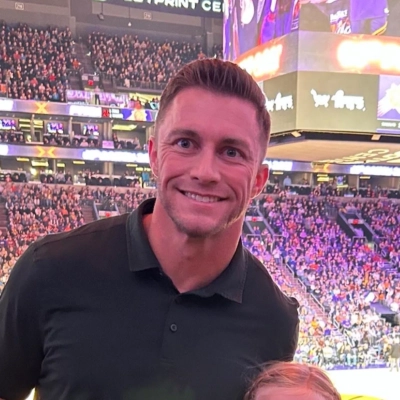25 Examples of Using Innovation to Enhance Customer Experience
In today's competitive landscape, innovation is the key to enhancing customer experience and staying ahead of the curve. This article delves into numerous examples of how companies are leveraging innovative strategies to revolutionize their customer interactions. Drawing from insights provided by industry experts, readers will discover practical and creative approaches to improve their own customer experience initiatives.
- Challenge Assumptions to Revolutionize Customer Experience
- Foster Innovation Through Micro-Test Weeks
- Experiment with Internal Tools for Faster Service
- Empower Sellers with Visual Decision Tools
- Respect Worker Ingenuity for Better Operations
- Test Ideas Collaboratively Before Broad Implementation
- Spark Creativity with Deliberate Bad Ideas
- Validate Customer Behavior Hypotheses Regularly
- Simplify Processes Through Controlled Experiments
- Turn Small Details into Profound User Experiences
- Transform Support with AI-Driven Chatbots
- Personalize Onboarding to Streamline Client Experience
- Integrate Innovation Across Business Functions
- Develop Tools to Empower Informed Decision-Making
- Quickly Implement Customer-Requested Features
- Host Hackathons to Solve Customer Challenges
- Adapt Smart Technology for Local Climate Needs
- Pilot AI-Assisted Questionnaires to Enhance Care
- Create Visual Guides for Better Customer Education
- Offer Flexible Service Models to Build Trust
- Tailor Eco-Friendly Solutions Through Field Tests
- Streamline Service Updates with Real-Time Communication
- Provide After-Hours Support for Client Peace
- Address Silent Stressors with Personalized Guides
- Anticipate Needs with Seasonal Video Explainers
Challenge Assumptions to Revolutionize Customer Experience
Innovation in customer experience occurs when you systematically challenge assumptions about "how things are supposed to work" rather than just adding new features. We foster this by implementing "assumption audits" where team members regularly question and test our most basic operational beliefs.
The traditional approach to customer experience innovation focuses on adding capabilities or improving existing processes. However, breakthrough improvements often come from eliminating unnecessary steps or reimagining fundamental interactions that everyone assumes are required.
Our specific example involved questioning why customers needed to "submit" requests at all. Our support team assumed that formal ticket submission was necessary for tracking and prioritization. During an assumption audit, a team member asked, "What if we could solve problems before customers realize they need to ask?"
This led to developing predictive support where we analyze usage patterns to identify likely issues before they impact customers. Instead of waiting for problem reports, we proactively reach out with solutions. Customer satisfaction increased 43% because problems get resolved before causing frustration, and our support team shifted from reactive troubleshooting to strategic customer success.
We foster an experimentation culture through "hypothesis sprints" where team members propose customer experience assumptions to test, design quick experiments to validate or disprove them, and share results regardless of outcomes. Failed experiments are celebrated for eliminating false assumptions rather than criticized for not working.
The strategic insight is that customer experience innovation requires challenging the status quo systematically rather than accidentally. Most teams assume current processes exist for good reasons, but regular assumption auditing reveals that many "requirements" are actually habits that can be eliminated or reimagined for dramatically better customer outcomes.
This transforms innovation from random creativity into a strategic process improvement that consistently enhances customer relationships.

Foster Innovation Through Micro-Test Weeks
I see innovation as the heartbeat of customer experience—it's what turns satisfaction into loyalty. My focus has always been on creating a safe space for experimentation, where ideas can be tested quickly without fear of failure. In my team, I introduced a "Micro-Test Week" every quarter, where each member proposes and pilots a small-scale idea to improve user interaction—whether it's a new onboarding flow, a content format, or a personalized email test.
One memorable example was when a junior designer suggested adding interactive product demos to our landing pages. We gave her full ownership of the experiment, and the results were incredible—engagement jumped by 40% in two weeks. That success encouraged others to pitch bolder ideas. By treating innovation as a daily habit rather than an occasional project, I've built a team culture where curiosity drives performance, and the customer consistently benefits from our collective creativity.

Experiment with Internal Tools for Faster Service
Innovation, to me, isn't about fancy technology—it's about removing friction for the customer. At SourcingXpro, we started experimenting when clients kept asking for faster product quotes. Instead of hiring more staff, one developer built a small internal tool that matched suppliers automatically by MOQ and region. It cut our response time from three days to less than one. At first, it wasn't perfect—some quotes were off—but we kept tweaking it together. That small experiment turned into one of our biggest advantages. I always tell my team: try the idea, break it fast, fix it faster. That's how innovation becomes culture.

Empower Sellers with Visual Decision Tools
Innovation in our real estate business means finding creative ways to reduce uncertainty for sellers in distress. I foster experimentation by having weekly 'solution sessions' where team members share customer pain points they've observed and propose ideas to address them. For example, we developed a 'decision timeline tool' that visually maps out all the seller's options with real financial projections for each path--whether they sell to us, list traditionally, or postpone selling. This simple innovation completely transformed our client conversations from sales-focused to consultative and has become our most praised service feature because it empowers homeowners to make truly informed decisions during emotionally challenging times.
Respect Worker Ingenuity for Better Operations
Innovation in my business isn't about technology; it's about finding a better, cleaner, or safer way to do the work, which directly enhances the client's experience. The ultimate role of finding a better way to operate is to prove to the homeowner that we respect their time and their property.
The way we foster a culture of experimentation is simple: I ask the guys on the roof for their ideas. I explain that the best way to be a good craftsman is to be a person who is always learning. I give them the budget and the time to try a new tool or technique if they can prove it will be faster or safer.
A specific example of this was finding a better way to load shingles onto a steep, hard-to-access roof. Instead of risking injury by carrying heavy bundles up a ladder, a crew leader suggested using a simple pulley and rope system for the initial lift. This "experiment" saved us almost two hours of hard labor and eliminated the risk of a guy falling. The client was impressed by our safety focus.
The core lesson is that the best innovations are simple and they always come from the people doing the work. My advice is to stop looking for complex solutions in a manual. Respect the ingenuity of your workers, give them the freedom to find a better, safer way to operate, and that commitment to improvement will be your best customer experience.
Test Ideas Collaboratively Before Broad Implementation
At Ranked, we see innovation as the engine that keeps the customer experience fresh and valuable. For us, innovation is not just about new technology; it is about finding better ways to connect brands and creators so that every interaction feels authentic and measurable.
We foster a culture of experimentation by encouraging our team to test ideas on a small scale before rolling them out broadly. During the build-up to Ranked 2.0, which introduced the real-time campaign dashboard and creator earnings features (company-reported details), we ran internal A/B tests on different dashboard layouts and feature sets. Team members from engineering, partnerships, and creator relations each contributed feedback, and the best concepts were refined and adopted.
This approach of small tests, quick feedback, and cross-team collaboration helps us move quickly while keeping the customer experience at the center of every innovation.
Spark Creativity with Deliberate Bad Ideas
Innovation is critical to enhancing customer experience because it allows us to anticipate needs and solve problems in ways customers don't expect. To encourage this, we have monthly 'bad idea' sessions where team members come up with deliberately unworkable concepts. This removes the pressure of being right and sparks creativity.
One of these ideas was to turn our onboarding into a simple gamified tutorial. After we implemented this, drop-off during setup went down 30%, and new customers felt much more confident getting started with our platform.

Validate Customer Behavior Hypotheses Regularly
Innovation happens when we encourage "customer hypothesis challenges"—team members propose theories about customer behavior and design quick tests to validate them. One team member hypothesized that small business owners make purchasing decisions during off-hours when they have time to think. We tested personalized late-evening email sequences and discovered 40% higher engagement rates after 8 PM. This led to time-optimized automation that adapts to individual customer patterns. We foster experimentation by celebrating "intelligent failures" and requiring every team member to propose one testable hypothesis monthly.
Simplify Processes Through Controlled Experiments
Innovation is only valuable when it makes life easier for the customer. People come to us because they want a quick, safe, and fair way to part with their devices. If that moment feels clunky or confusing, we've failed them. Within my team, I encourage running small, controlled tests that put the customer journey front and center. We celebrate speed, not perfection. One of our best examples was streamlining the kiosk interface. We cut unnecessary steps, tightened up the payout flow, and tested it in a handful of locations. The feedback was instant. Customers completed transactions faster and left more satisfied. We quickly scaled the update across the country.
That is the culture we have built. Every experiment has to connect back to making the process simpler, safer, and more rewarding. When the team sees their work directly improve the experience, it builds momentum. That is where real growth comes from.
Turn Small Details into Profound User Experiences
Innovation is most important to improving the customer experience because it allows us to anticipate needs rather than just reacting to them. By trying new workflows, new designs, and new technologies, we can make our products more intuitive, efficient, and enjoyable for the user.
To foster a culture of experimentation, we give our people the autonomy to treat each idea as a hypothesis — test fast, measure outcomes, and learn from failure and success. We have short cycles of feedback, celebrate unorthodox thinking, and share insights widely so that experimentation is a natural part of the workflow and not an afterthought.
For example, when we saw a drop in user activity on one of our AI tools, instead of guessing why, we ran mini A/B tests with different interface iterations and micro-interactions. One iteration included a visual processing animation — something we initially thought would be superficial — but boosted user retention by over 20%. That test cemented the way small, inventive details can make a profound difference in the overall experience.

Transform Support with AI-Driven Chatbots
Innovation is essential for enhancing customer experience, particularly in data recovery where customers face urgent situations. At DataNumen, we foster experimentation by encouraging our team to identify customer pain points and test AI-driven solutions.
A specific example is our AI chatbot trained with comprehensive data recovery knowledge. Recognizing that data loss victims need immediate help, often outside business hours, we experimented with an AI system trained on our expertise.
The results were impressive: customers get 24/7 real-time responses to urgent questions, dramatically reducing support response times while increasing sales. It also significantly cut our human customer service costs. We built in safeguards where complex issues get escalated to human technical support, ensuring accuracy.
Our experimentation culture includes continuous improvement—we monitor all chatbot conversations and adjust responses when needed. This ensures the AI remains accurate while pushing automated support boundaries.
This innovation transformed our customer experience from traditional support to an always-available intelligent assistant that guides users through data recovery challenges immediately when panic strikes. The key is empowering teams to identify pain points and test technology solutions, even if they're initially imperfect.

Personalize Onboarding to Streamline Client Experience
Innovation is crucial for us in real estate because it allows us to continuously improve how we serve homeowners, especially when they're facing complex decisions about selling their property. For instance, we recently experimented with a more personalized, digital onboarding process for clients looking to sell their homes quickly. Instead of a generic form, we developed a dynamic questionnaire that adapts based on their initial responses, which not only streamlines the process for them but also gives our team better insights into their unique needs upfront. This kind of experimentation helps us create win-win scenarios by simplifying complex situations and making clients feel genuinely supported.

Integrate Innovation Across Business Functions
Many aspiring leaders believe that to enhance customer experience, they must master a single channel. They focus on measuring customer service scores or implementing marketing gimmicks. However, this is a significant mistake. A leader's job is not to be a master of a single function, but to be a master of the entire business.
Innovation's role is to integrate customer experience into operational reality. It taught me to learn the language of operations. We stopped viewing it as a separate marketing effort and started thinking like business leaders. The job of innovation isn't just to create new things; it's to ensure that the company can fulfill its customer needs profitably.
We encourage experimentation by creating cross-functional "Go/No-Go Zones." A specific example is empowering the OEM Cummins technical support team (Operations) to conduct small-scale experiments with personalized video diagnostic help (Marketing). They were given autonomy to bypass traditional sign-offs for anything that directly improved the "First-Time-Fix-Rate."
The impact this had on my career was profound. It transformed my approach from being a good marketing person to someone who could lead an entire business. I learned that even the best innovation in the world fails if the operations team can't deliver on its promise. The best way to be a leader is to understand every part of the business.
My advice is to stop thinking of innovation as a separate department's task. You must view it as part of a larger, more complex system. The best leaders are those who can speak the language of operations and understand the entire business. Such a leader is positioned for success.

Develop Tools to Empower Informed Decision-Making
Innovation, in my line of work, is about eliminating buyer's remorse and helping sellers feel confident in their choices. I foster experimentation by encouraging my team to develop intuitive tools that empower homeowners with information. For instance, we created an interactive cost-benefit calculator that allowed sellers to input potential repair costs versus an as-is sale price, giving them a clear, personalized financial roadmap. This innovation didn't just enhance their experience; it gave them peace of mind and often accelerated their decision-making process because they felt truly informed.

Quickly Implement Customer-Requested Features
Innovation is how you keep your finger on the pulse of the customer voice. At Merchynt, we encourage our partners to submit feature requests and then move quickly to experiment with and test them directly! Here's a quick example: when we received several requests from agencies to build employee-level review links, we built them within weeks. This not-so-huge piece of innovation changed the way our clients ran review contests and deepened engagement with their customer base. It's a simple culture of experiment, listen, and implement quickly.

Host Hackathons to Solve Customer Challenges
Innovation plays a critical role in enhancing customer experience by allowing us to solve real pain points in ways competitors haven't considered. At our company, we foster experimentation through our annual Customer Experience Hackathon, where cross-functional teams collaborate intensively over 24 hours to develop creative solutions to customer challenges. This event creates a safe space for employees to propose bold ideas and receive immediate feedback from leadership, reinforcing our commitment to innovation at all levels of the organization.

Adapt Smart Technology for Local Climate Needs
Innovation is at the heart of enhancing the customer experience in the HVAC industry, and at ALP Heating LTD., we actively foster a culture of experimentation that empowers our team to think creatively. As a family-owned business, our commitment to our community and customers drives us to continuously seek ways to improve our services and products.
One of the key areas where we innovate is in the adoption of smart technology. For instance, we've integrated smart thermostats into our service offerings. These devices not only allow homeowners to control their heating and cooling remotely but also provide insights into energy usage patterns. This innovation has proven particularly beneficial for our clients in the Greater Toronto Area, where extreme weather conditions can lead to high energy costs. By analyzing data collected from these smart devices, we can offer tailored recommendations that help our customers save money while ensuring their homes remain comfortable year-round.
To foster a culture of experimentation, we encourage our team to share ideas during our regular brainstorming sessions. We emphasize that every team member, from our HVAC technicians to our customer service representatives, has valuable insights based on their direct interactions with clients. This inclusive approach has led to initiatives like our ALPCare program, which offers preventive maintenance plans. By listening to customer feedback and experimenting with service delivery, we've designed a program that not only extends the lifespan of HVAC systems but also provides peace of mind for our clients.
A specific example of this culture in action was our response to the challenges posed by the unusually humid summers we experience in Ontario. Our technicians experimented with various humidity control solutions, leading to the development of customized humidifier installations. This solution not only enhances indoor air quality but also directly addresses a common concern among our customers, showcasing how we adapt to local climate challenges.
In summary, innovation is a continuous journey for us at ALP Heating. By embracing new technologies and fostering a culture where every voice is heard, we're able to enhance the customer experience significantly. Our aim is to remain a reliable partner for our clients, ensuring their comfort while being mindful of energy efficiency and safety. As I always say, "A comfortable home is a happy home," and we strive to bring that happiness to every household we serve.

Pilot AI-Assisted Questionnaires to Enhance Care
Innovation drives a more seamless and personalized experience for our patients, allowing us to anticipate needs and simplify interactions. We cultivate a culture of experimentation by encouraging team members to pilot new tools or processes in controlled settings, measure results, and iterate quickly. This approach ensures that improvements are both creative and practical, directly benefiting patient care.
One specific example involved testing AI-assisted pre-visit questionnaires that adapt to each patient's condition. Staff monitored completion rates, accuracy of information collected, and follow-up efficiency. Within weeks, the pilot showed a 30% increase in accurate pre-visit data and a noticeable reduction in administrative follow-up, enabling clinicians to focus more on care and less on paperwork. This experimentation not only improved operational efficiency but also enhanced patient satisfaction by making each visit more streamlined and tailored.

Create Visual Guides for Better Customer Education
For us, innovation has meant rethinking how we educate customers while we're on-site. A specific example was creating simple, photo-based guides of common pest entry points around homes in Birmingham. Instead of just telling someone "you've got gaps in your siding," technicians snap a quick picture on their tablets and hand over a short guide showing what to look for and how to seal it. Customers feel more empowered because they can actually see the issue, not just hear about it.
What's worked best is treating new ideas like short field trials with a clear purpose. For instance, we'll run a new tool or approach on a handful of visits, then check whether it actually saves time or makes the explanation clearer for customers. If it does, we roll it out wider; if it doesn't, we move on quickly. That simple test-and-learn rhythm has helped us keep experimenting without slowing down daily operations.

Offer Flexible Service Models to Build Trust
Innovation plays a critical role in enhancing customer experience by allowing us to solve problems in ways that better meet client needs. At our company, we foster experimentation by creating space for new service delivery models, as demonstrated when we developed flexible partnerships with clients. Not every company can work with a one-size-fits-all type plan and requires only partial services. We've taken this approach to try and cater specific plans based on individual client needs and segment what services are delivered in a scalable way. This innovative model built client trust gradually by allowing customers to maintain control of certain functions while we demonstrated our capabilities in the select areas they wanted to engage with us on. Rather than offer a small number of rigid service plans, we offer a menu of services they can select that make sense for their business and build scalability around those modules.

Tailor Eco-Friendly Solutions Through Field Tests
In my view, innovation isn't always about what the customer sees directly but how we strengthen the service around them. A good example was when we started experimenting with eco-friendly product rotations depending on the season. By testing different formulations in small trial areas first, we learned which worked best in Arizona's heat without losing effectiveness. That meant customers didn't have to worry about re-treatments as often, and it gave them confidence that we were tailoring solutions to their environment.
To build that kind of culture, I encourage the team to view experiments as learning opportunities, rather than pass-or-fail tests. If something doesn't pan out, we discuss what we gained from trying it and how it might be applied elsewhere. That attitude makes technicians more open to suggesting changes, and those small field-level experiments often lead to big improvements in the customer experience.

Streamline Service Updates with Real-Time Communication
By eliminating obstacles that people aren't even aware irritate them, innovation shapes the customer experience. Rethinking the way we deliver service updates was one example for us. We developed a system that texts clients when a technician is on their way, includes the technician's name and photo, and provides a digital service summary immediately following the visit—instead of merely leaving paper slips or generic emails. That minor adjustment decreased customer follow-up calls and increased trust.
I encourage the team to raise minor issues they observe in their daily work to promote this kind of creativity. Even for basic solutions, we test them in real time to observe how customers react. We can continuously improve the experience without waiting for a major redesign, thanks to that culture of rapid experimentation.

Provide After-Hours Support for Client Peace
For me, innovation is about creating a more personal and stress-free experience for homeowners, especially when they're facing tough decisions. I like to foster a culture where my team feels comfortable bringing even the simplest ideas forward—like when we launched an after-hours hotline so sellers could reach out with questions whenever worries hit, not just during business hours. That small change made a big impact, with clients telling us it helped them sleep better at night, and it reminded our team that sometimes, the best innovations come from simply listening and responding with empathy.

Address Silent Stressors with Personalized Guides
Innovation, for me, is about easing the emotional burden of selling a home by anticipating needs homeowners might not even voice. I foster experimentation by encouraging my team to identify one 'silent stressor' each quarter and test a solution--like when we started creating personalized neighborhood guides for families moving within Augusta. These guides, which highlight parks, schools, and local events, transformed our client conversations because they showed we cared about their next chapter, not just closing a deal.

Anticipate Needs with Seasonal Video Explainers
Innovation, for me, is about anticipating needs before the customer has to point them out. A good example was when we noticed repeat calls from people asking the same seasonal questions—such as why ants kept appearing in their kitchens each spring. Instead of answering individually every time, we created short, personalized video explainers that technicians could text to customers before their service. It wasn't flashy, but it gave people immediate, clear guidance and made them feel supported even before we arrived.
To build that culture, I make it clear that experimentation doesn't have to mean big, expensive projects. I ask the team to test small ideas that could save a customer time or add clarity. When those ideas are successful, we share the results across the company so that everyone can see the impact. That recognition makes people more willing to suggest the next improvement, and it keeps innovation tied directly to the customer experience.







